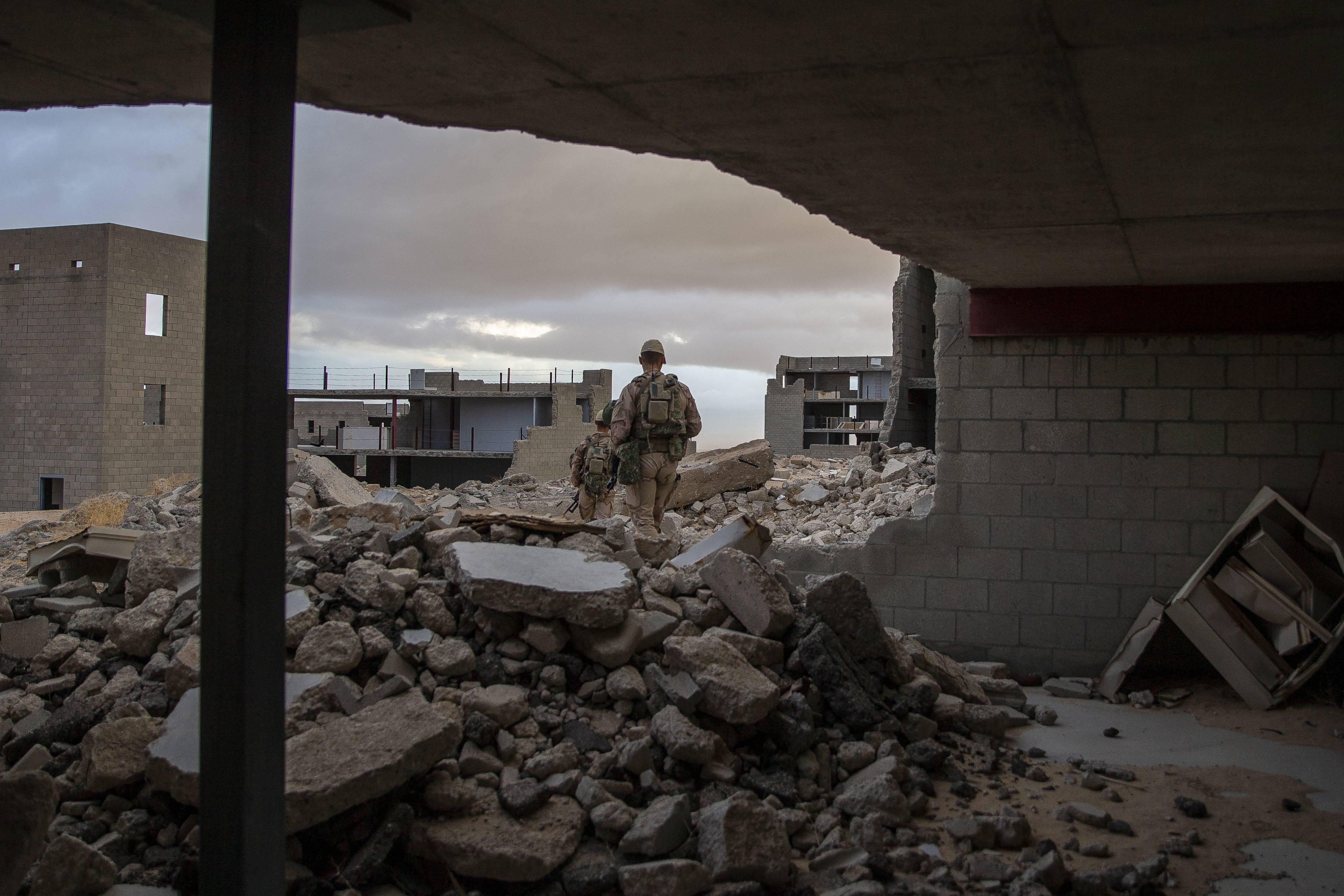
Marines of different nations battled it out in the desert, facing off recently in a five-day campaign that pitted technologically-skilled military forces against one another in a test of high-end conflict.
The training exercise at the Marine Corps Air-Ground Combat Center in Twentynine Palms, Calif., wasn’t just about determining the victor. More so, the realistic training against peer forces enabled multinational forces to push and test each other and themselves in the likely difficult and challenging high-tech future conflicts, where they’ll face physical battles and cyber attacks.
The exercise in late October pitted a Marine air-ground task force led by 3rd Marine Regiment from Hawaii augmented with Marines from Camp Lejeune, N.C., against an entrenched, occupying international, joint force. Led by the local 7th Marine Regiment, it included British Royal Marines with 40 Commando, Dutch Marines and United Arab Emirates forces.
The MAGTF Warfighting Exercise, or MWX 1-22, put technologically advanced, skilled troops against an equally capable force, high-level peer training that top Marine Corps leaders say Marines need to beat a formidable, well-equipped, advanced enemy.
“We achieved a lot of success, and we learned a lot about ourselves and how to operate against a near-peer adversary,” Col. Timothy Brady, Jr., the 3rd Marines regimental commander, told USNI News.
His large regimental force had rolled into the MWX after completing a scheduled Integrated Training Exercise at the desert base.
“In the scenario, we were basically an offensive element against a defense element with a relative combat power of a one-to-one fight. So we had to bring to bear all of our maneuver warfare and multi-domain operations to be able to achieve success against an enemy like that,” Brady said.
And that meant “having to think and outpace an enemy,” he said. As a regimental headquarters, “we were looking to better understand the kill-chain processes, the digital interoperability of our units, and also the staff integration across the warfighting functions in a multi-domain operation.”
“The ability to bring all of this together – every weapons system, every warfighting function, every domain – in one location and be able to train with and synchronize the effects to be able to support maneuver is something that you just can’t achieve anywhere else,” he added.
The five-day MWX provided realistic training and a timely test for 500 Royal Marines who’d just completed several weeks of training with some Dutch Marines during their Exercise Green Dagger at the desert ranges.
“It’s been really challenging for us, with so many different aspects from communications and getting uplinked together to understanding how we operate on the battlefield,” said Lt. Oliver Coote, a Royal Navy unit education and media officer with 40 Commando.
The high-level interoperability training “gets us to think like the enemy and consider actions that we just wouldn’t normally do in the real world,” Coote said. “We’re actually going to be a lot better than we would otherwise be.”
Military officials didn’t detail the specific scenarios at play during MWX, but the overall scenario of the exercise force with the mission to outmaneuver and overwhelm a well-equipped and dug-in adversary savvy in multiple warfare domains echoes existing threats from countries like China and Russia.
Revamping the Commandos
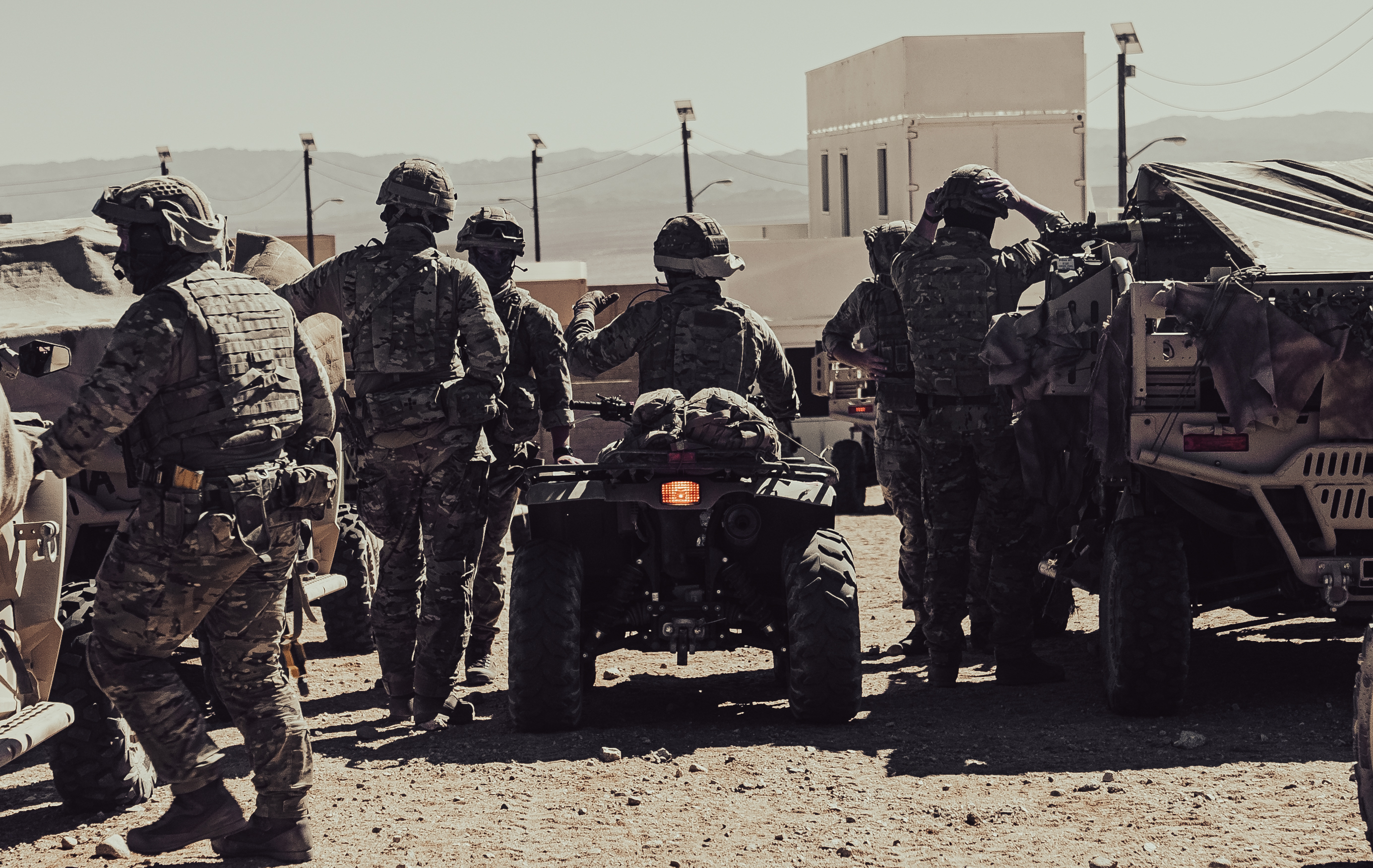
As part of an ongoing restructuring of the Royal Marines called “Future Commando Force,” the Taunton, U.K.-based 40 Commando formed a high-readiness force called Littoral Response Group (South). It will deploy to the Sinai region next year with 500 British and 120 Dutch troops along with amphibious ships and aircraft, according to the Royal Navy.
“We are looking to develop the Royal Marines into the next decade or so to maintain relevancy,” Coote told USNI News. The commando force is developing two Littoral Response Groups, and 40 Commando has the lead in creating LRG South, “which we’ve brought together here for the first time” along with sub-units including armored support and commando logistics.
For the Royal Marines, the weeks spent training at the Twentynine Palms base mimicked the hot, arid environment of their 2022 deployment. The MWX’s battle provided a final evaluation for the new organization as they integrated with their foreign partners.
“Being able to come out here and test the LRG South has been a huge benefit,” he said. “We are trying out new things. We are pushing our capabilities to the limit and understanding how we could be operating in the next few years. This exercise has shown that we’re along the right lines.”
Among the benefits “is seeing how we have been able to work organizationally within ourselves and with U.S. assets,” said Lance Cpl. Nathan Beasley, a Royal Marine who specializes in intelligence for 40 Commando’s headquarters unit. At one point, it was “the U.S. supporting us with longer-range artillery capability and we were supporting the U.S. guys with armored support elements, working together and jointly in cohesive elements.”
The exercise helped in “building up that interoperability and capabilities in fire control and long-range gunfire support,” Beasley said.
The 7th Marines-led international force included Royal Marines’ Commando Logistic Regiment; 30 Commando Information Exploitation Group; 24 Commando Royal Engineers and 29 Commando Royal Artillery, and the 12 Raiding Squadron of the Netherlands Marine Corps, according to the British Royal Navy, which oversees the commando force. A UAE strike company also joined them. U.S. Marine units included 2nd Battalion, 5th Marines from Camp Pendleton, Calif.
The Royal Marines brought their own capabilities in artillery, air defense and electronic warfare and some organic weapons systems but, due to shipping and time constraints, were supplied with U.S. vehicles for the training, including the all-terrain MRZRs the commandos already use.
“They really helped massively. They managed to source us a lot of vehicles… in the hundreds of Humvees and MTVRs and things like that,” Beasley said. “It wasn’t just bringing ourselves to the party; it was the U.S. Marines really pulling us in and saying, Yeah, we can help you with that and making it so that we can take part in the exercise.”
The five-day battle was fast paced, with no downtime.
“There’s that added pressure to make sure that we do meet those training requirements and trying to test those warfighting constructs that both sides have been developing,” Beasley said. “We tried to facilitate that is such a short space of time.”
For five days “they need to take these key objectives, these key ranges, which is not long at all,” Coote said. “It forces the training and the strategy to be a lot more innovative, a lot more forward-thinking out of the box, and it allows them to test different concepts, different ways of training that we just wouldn’t do” back home.
“We’re going to be a lot more flexible, adaptable and much quicker to be able to respond to what the government are wanting us to achieve and incorporating new technologies,” he said, “potentially looking at UAVs, drones and things like that to help develop our operational picture.”
“We are still in the early states of getting this Commando element of the Littoral Response Group together,” he added. “So this is a big tick in the box for us to say that we can operate on our own and the concept is working.”
Marines in the fight
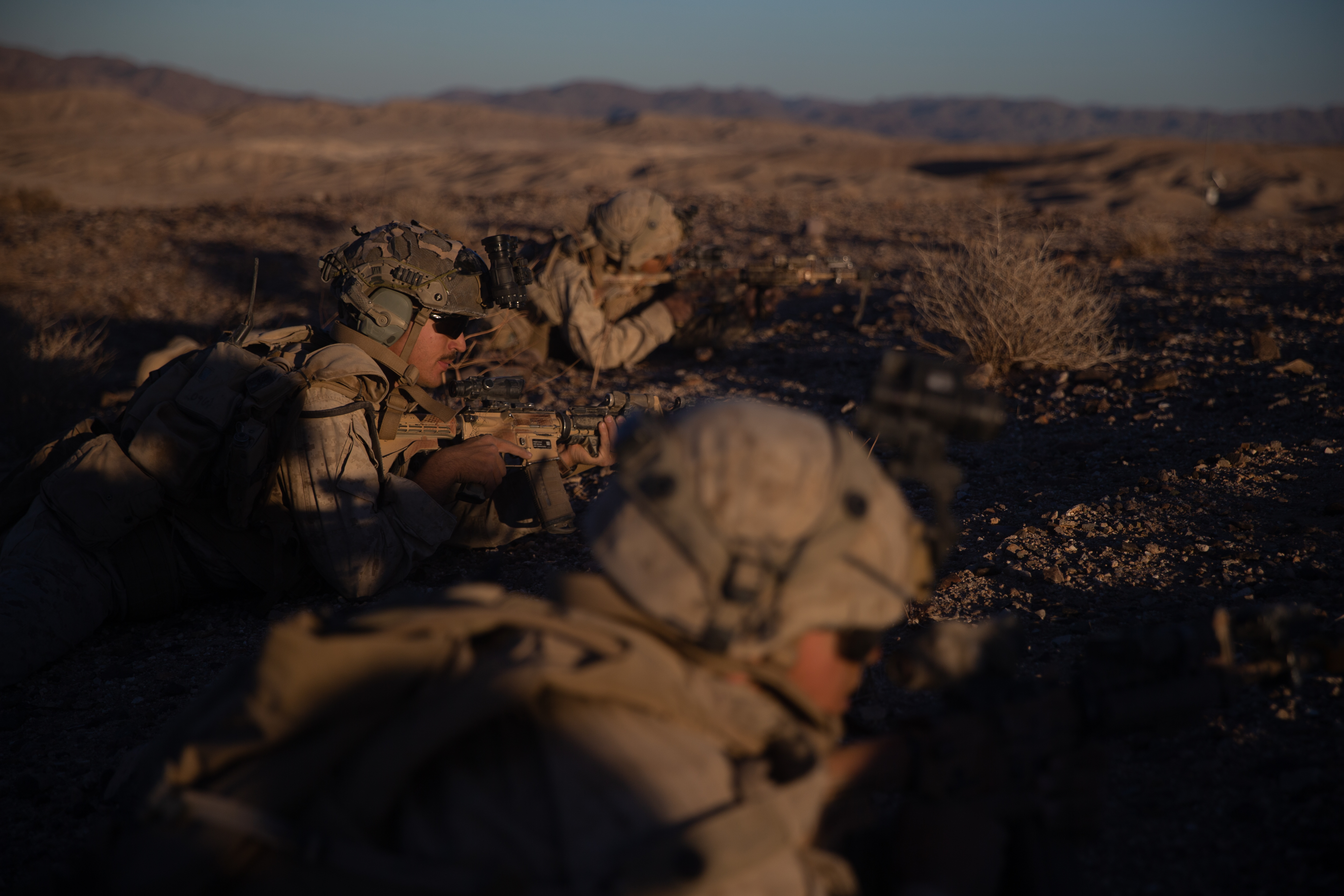
For five days, the 3rd Marines-led force tried to unseat the multinational adversarial force that had settled into the makeshift cities of the sprawling Range 220 and two smaller ranges that together provided the operational battlespace.
“The game play is designed for our enemy — the 3rd Marines — to attack the position and gain control of the ranges in question,” Coote said. The defenders usually have the advantage, “and in the information operations view, we were in the city and we could manipulate or control the narrative of what was going on there.”
The coalition force had established relationships with local leaders and convinced them “that we were in there for the right reasons […] and we were supporting them where they needed it,” he said. “So we could go into Range 220 and give them water and medical supplies and combat service support, and that would be really favorable to us.”
“For the attacking side who were trying to gain control, they’re at a big disadvantage right away, because we’re already in there supporting them,” he added. “They’re going to find it a lot more challenging, especially if there’s a civilian population in there who are against them being there.”
Both sides had air assets to include tactical and strategic-level drones, including Army MQ-1C Gray Eagles, and embedded with special operations forces. Information operations and psychological operations units drove and responded to the sentiments among the local populace that included role-players and a guerrilla force. The forces, whether front-line or combat support, had to grapple with the challenges that terrain and distances posed to maintaining and securing communications networks and physical security. And social media was in play throughout.
Desert fundamentals
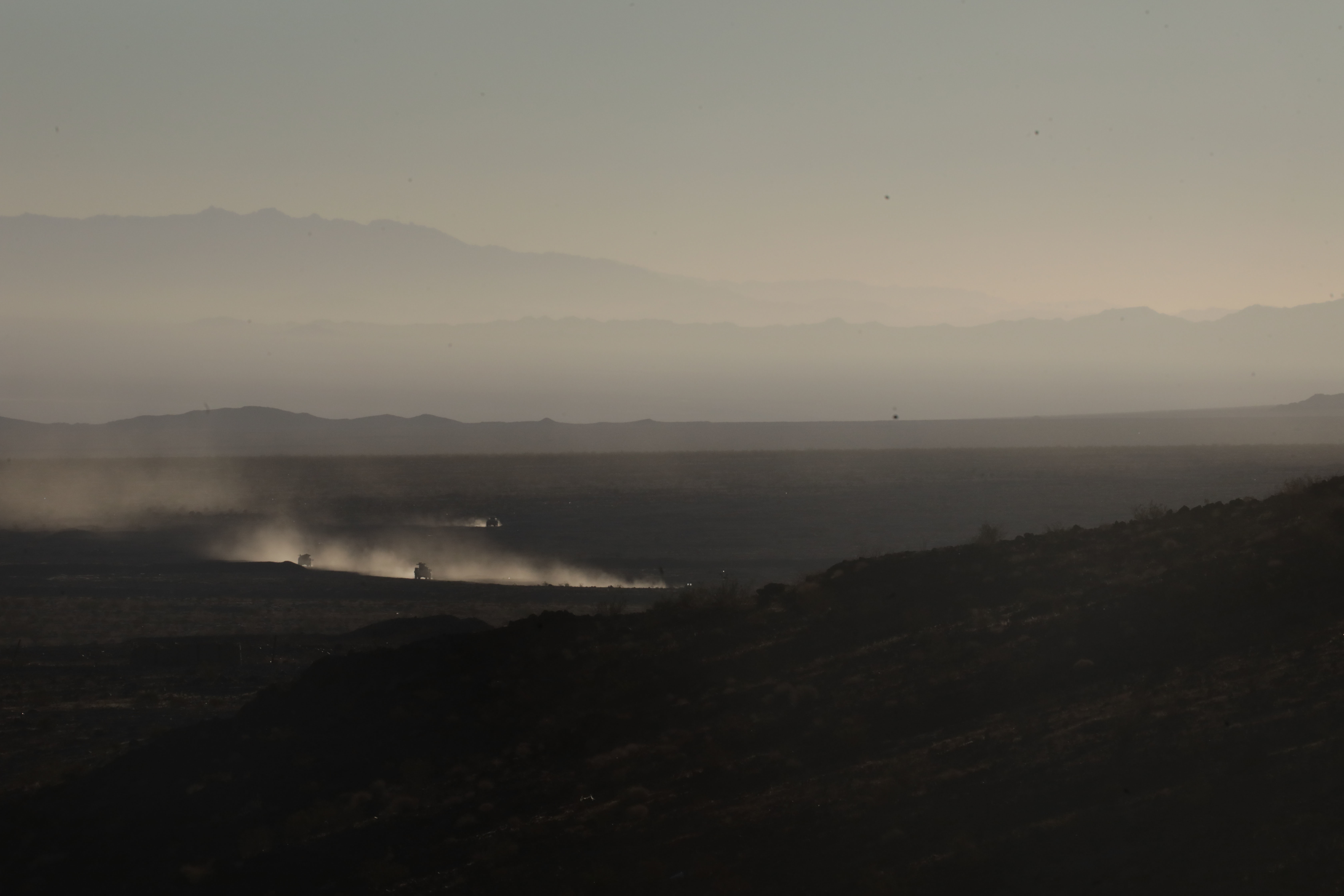
The 3rd Marines formed as a Marine air-ground task force that included two infantry units (1st Battalion, 3rd Marines and 3rd Battalion, 2nd Marines); 1st Battalion, 12th Marines plus members of 1st Battalion, 10th Marines; Charlie Company of 2nd Light Armored Reconnaissance Battalion; a platoon from 2nd Amphibian Assault Battalion; a truck platoon form 2nd Motor Transport Battalion; and Combat Logistics Battalion 8, said Capt. Kevin Smith, a regimental spokesman.
During ITX, their predeployment training and evaluation, 3rd Marines focused on offensive and defensive operations, combined arms and live-fire and maneuver warfare at the platoon, company and battalion levels.
MWX “was a great opportunity to do a peer-on-peer, adversarial type of fight, and it was a great opportunity to partner with our allies,” Smith said. “We really learned a lot of lessons.”
Next year, 3rd Marines will restructure as a Marine Littoral Regiment, the first in the Marine Corps’ Force Design 2030 overhaul to reshape into a deployable, multi-domain maritime force. While the desert is a far cry from the littoral environment, it reinforced key fundamentals of warfighting in a dispersed, distributed battlespace, Brady said.
“The first step is to understand the mission. The second step is to understand the enemy,” he said. “You turn the map around and you look at the battlespace from the enemy’s perspective, and every decision you make should be from that perspective and an understanding of the enemy. That’s essentially what we learned through that MWX exercise — learned and reinforced. You can no longer take for granted air superiority or communications superiority. You have to take all of that into consideration and think like your enemy thinks.”
“Maneuver warfare in our doctrine of MCDP-1 Warfighting is all about generating operational tempo, in time. And in space, about gaining the positional advantage of the adversary,” he added. “And that’s what we constantly sought to do during the entire exercise of MWX. Get inside the enemy’s OODA loop (Observe-Orient-Decide-Act) and be able to make those decisions faster than the enemy to be able to put them on the horns of a dilemma.”
For the exercise, 3rd Marines wasn’t paired up with international forces, and the 7th Marines were. In a real operation “we will have allies and partners, and we need our allies and partners in a coalition force in the future,” Brady said. “So it was a great opportunity to have them out there as part of the exercise.”
MWX “builds on strong and mutual relationships between US units and our allies and partners. It’s further enhanced by the large scale, force-on-force exercise and live fire and maneuver,” he said, “so it prepares us for that next fight.”
No surrender
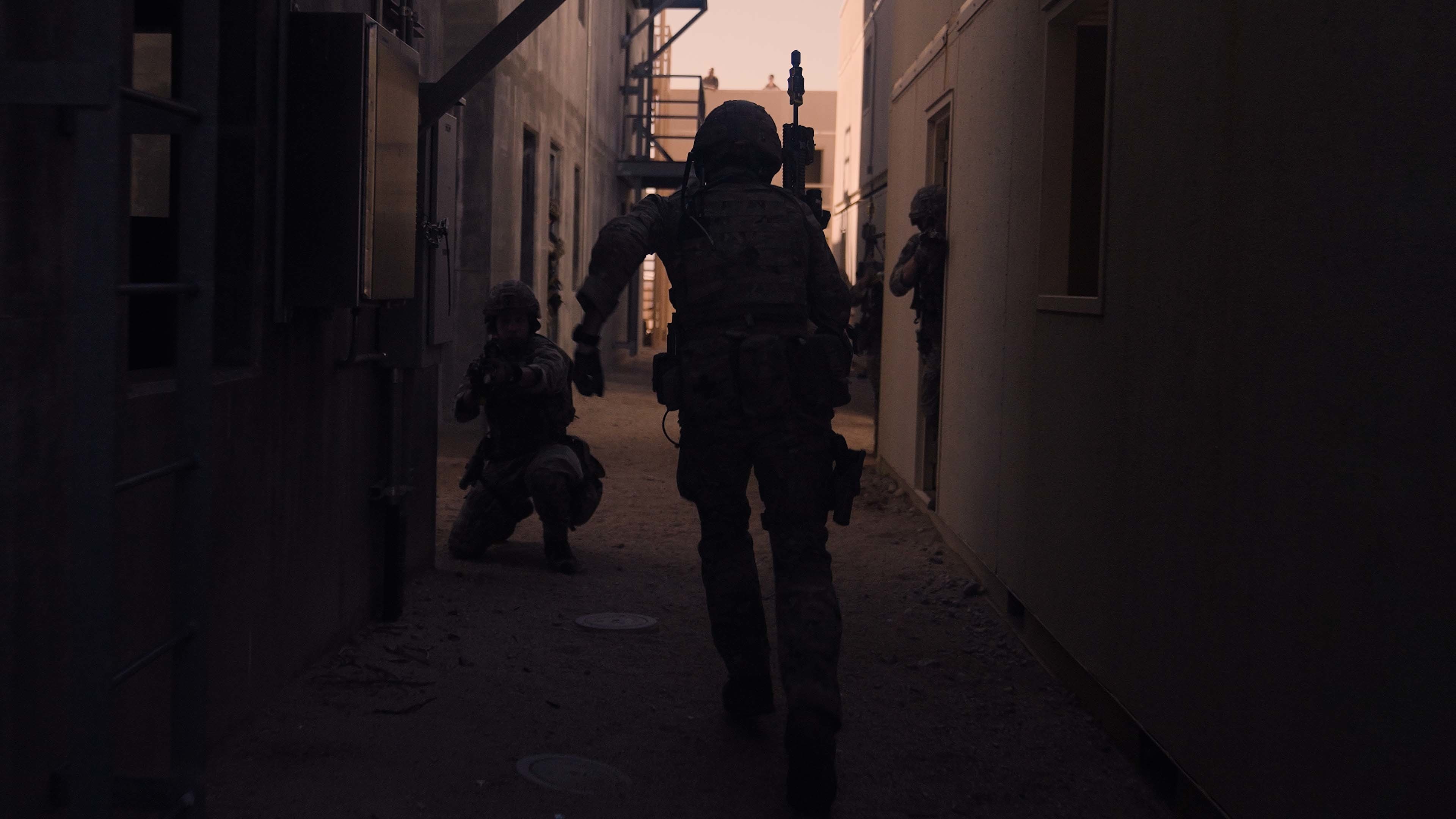
While a peer-to-peer, force-on-force fight presumes a win, lose or draw for participating forces, military officials said the five-day battle wasn’t solely focused on victory. But just days after the dust settled, an article in the U.K.-based daily The Telegraph reported that U.S. Marines were so overwhelmed that they at one point surrendered to the Royal Marines and had to regroup. The report quickly went viral and global. The Royal Marines dismissed it as untrue.
“The points of the 3rd Marines surrendering is not accurate. This type of exercise is not one where either side surrenders,” Coote said. “There was a pause two hours before the end of the exercise on the final day to decide if we wanted to carry on and exploit some extra training opportunity or end the exercise there. The article is not completely accurate in the surrender aspect.”
However, a paper by Jack Watling, a land warfare research fellow at the Royal United Services Institute, a London-based think tank, who observed the exercise, outlined the performances on both sides and described a 3rd Marines force overwhelmed at times and an evolving commando force in need of deployable fires, equipment to deter thermal identification and improved force tracking for multinational forces.
Smith said the unscripted exercise “was a back-and-forth game, and both forces go to regenerate forces… If it is just an attrition-type fight, in who kills more people, then we lose the training value.”
Honing warfighting skills and learning lessons, Brady said, are what such training exercises are about.
“There are no winners. There are no losers. Everybody is a winner, because everybody learned and gets better as a unit and as an individual Marine during an exercise like MWX,” he said.
“It’s a whole lot of fun,” he added. “I know the CO of 7th Marines very well, so it’s going up against a friend, which it makes it more fun.”





